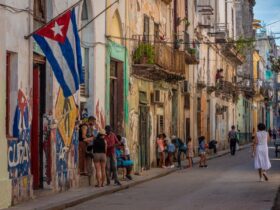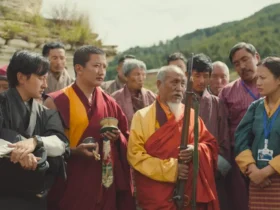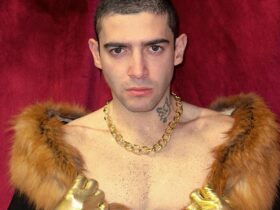Ed Kashi is an award-winning photojournalist and filmmaker, committed to documenting the social and political matters of his time. As a member of the VII Photo Agency, he has been published worldwide, working with organizations like The National Geographic Society and winning awards like UNICEF Photo of the Year. Kashi’s signatures include the close relationships that he fosters with his subjects and his dedication to shining a light on issues through artistic mediums. He is also a mentor to photographers and filmmakers globally, sharing his decades of experiences within the realms of visual immersive storytelling and human rights. Kashi covers a diverse array of topics, from documenting the exploitative labor practices embedded in Qatar’s preparations for the World Cup, to the Syrian refugee crisis, to aging in America.
Q: From the first time you picked up a camera, how did you decide to become a photographer and filmmaker?
A: Well, I wasn’t one of those people who photographed in high school. I never took a picture. I never made a picture until I got to college. So my first camera was when I was a freshman at Syracuse University in upstate New York. I was 17 or 18 years old.
One thing I remember clearly is that by the time I was around 16 years old, my dream was to become a writer. I had this dream of being a novelist and all that, and then I got to college and was quickly, you know, absolved of that notion because I wasn’t a great writer. And so, anyway, I ended up going to a university that had one of the best photojournalism programs in the world. That is the Newhouse School of Public Communications at Syracuse University. And so I thought, Oh, well, let me try photography. I wanted to travel. I wanted to engage with the world. I wanted to meet people. And I wanted to be a storyteller. So I thought, Well, I’ll try photography. And it’s funny, when I look back at eighteen, I’m like, How did I make those decisions, like what happened? But you know, it ended up being a good choice. And within a few months of learning photography, I just fell in love with it. Simply fell in love with it. And, you know, it was that moment where like, my brain cleaved open and I could imagine a long life and if I was able to have a long life that I could never run out of ways to use photography.
I grew up in New York in the 1960s and 70s. So I grew up around the civil rights movement, the feminist movement, environmentalism, the anti-Vietnam War movement, and all that. All these things were brewing around me. Those social and political issues were almost like in my breast milk. So, when I reached the point where I started to become a photographer, it was natural that I would want to use photography as a way to tell stories and the idea of photojournalism seemed like an amazingly high calling, you know, if I could do it.
Q: Do you think that the camera has a unique ability to change perspectives on social and political issues? Most people strive to be writers or public speakers, and it seems like not as many people are aware of the impact visual art has on our global society.
A: We’re in the Instagram age, right? If there is anything that social media has proven, it is that images are the ‘lingua franca’ of the world. Obviously music is a common language, but photography, precisely still photography, is a global language. While I don’t believe that still photographs can change the world in the way they have in the past, like with the Vietnam War, and the Civil Rights Movement in America, I do believe that still photographs still have tremendous impact on people and can change the way they think. They can inspire people to get engaged and evolve and contribute. We’re living in an image laden moment; it’s amazing how much we use images. The danger is that we use it so much that we will start to take it for granted.
Q: How has the photojournalism scene changed since your career began four decades ago?
A: Remember that Apple advertisement from about 10 years ago that said that there’s “7 billion photojournalists in the world,” implying that anybody with a smartphone can be a photojournalist? The way we create the work has changed. The way we disseminate the work has changed. The financial structure around the industry of photojournalism has in many ways decimated. I mean, the time I’ve been in the profession, you know, in some ways, it’s kind of crumbled and crumbling, because of the proliferation of cameras, you know, phone cameras and all that, but also just, I think the economics of, you know, a lot of the blame I put on Wall Street and this sort of hyper capitalism of America that is Darwinian and kind of just cruel, and, you know, so all these American newspapers that have that have been put out of business. It wasn’t that they were losing money, they just weren’t making enough of a profit for Wall Street. So you have, you know, this sort of hyper capitalism, that mixed with the digital revolution that’s made everything easier. more accessible, and so it’s devalued. You know, photojournalistic images. And when I say that, I don’t mean in terms of their impact, I’m talking about their economic value, because most things in our current society are about how much you’re profiting. Half of my income used to come from the resale of my work, and now it’s maybe a 20th of my income. I mean, it is so precipitous, so dramatic. But that’s also because as a photojournalist, the kinds of images I make are not necessarily pretty and beautiful and all that. It’s about content. It’s about a story. It’s about an issue. Those kinds of images have been reduced in their economic value. The reason I’m saying that is that it just makes it harder to make a living, especially if somebody is just getting started. You know, I’m in a fortunate position because I’m very established. If you’re getting started, it’s a whole different ball game. You don’t have the 10s of 1000s of newspaper staff jobs that you used to have. There’s still staff jobs, but there’s not as many magazines, which is where I’ve done all my work as a freelancer. There is a much lower volume of work, but there’s a lot more photographers.
Q: How do you choose which stories you want to tell?
A: It’s based on a combination of different elements. First off, it’s something that I feel in my gut, my heart and my mind. I’m genuinely interested in it. When I found out that the Kurds were the largest ethnic group in the world without a nation of their own, I was hooked. It’s that idea that I might read something or meet someone whose story I want to explore; it starts from there. Then, there’s the matters of security, safety, the cost, the logistics: there are all kinds of factors that go into deciding what project I’m going to work on. And they’ve certainly changed — it’s very different now than it was 20 or 30 years ago. For instance, I’ve done a fair amount of work in conflict zones or areas of civil unrest. I’m going to be less likely at this stage in my life to want to be in those situations, just because psychologically, it’s almost too much to bear. There was a time, as I like to joke, where I thought the work I did with National Geographic would bridge the gap between Islam and the West. I didn’t do a very good job, did I? Anyway, it’s the idea of calibrating your goals and dreams to have more realistic outcomes. Therefore, I will choose projects where I feel like I can really have an impact.
Q: What kind of a relationship do you hope to establish with your photography or film subjects?
A: I talk about this a lot when I am teaching or mentoring people — what I do is weird. Basically, I’m trying to convince you to let me into your house to photograph or film you in the most intimate moments where you might be vulnerable but I also want you to ignore me, right? I’m trying to invade myself into your life but I want to record you in a candid moment. It’s a really weird profession. But when you do it with sensitivity, treat people with dignity, and you’re humble, it’s amazing what photojournalism can do. The idea is that you just have to be honest with people and explain who you are, what you’re doing, why you’re doing it, and most importantly, what will happen with the work you’re producing. People need to understand what they’re agreeing to. As I like to say, the camera is like a passport into worlds that you would otherwise never get into, whether it’s historical events or the intimate lives of individuals. To me, that is the seductive power of being a photographer. I’ve always been mr. inquisitive, always curious. The camera becomes my conduit into learning and asking questions and getting some answers. You could go to Istanbul as a tourist and you’ll be on the surface and it’ll still be amazing. But when you go as a photojournalist or a documentary photographer, you’re going underneath. You’re not just going to the main tourist attractions, you’re going to people’s homes, you’re going behind the scenes, learning things you would otherwise not learn. And that to me is magical.
Q: Do you have a favorite and a least favorite memory from your career?
A: I can tell you the least favorite was being detained in Nigeria for four days by the military. And then ranking right up there was having a panic attack in Baghdad at the mother of all mosques. You know, the day after the Americans killed 500 People in Fallujah in 2004. I would say those are the two low points where I feared for my life. Probably the one of the richest experiences was in West Virginia, where I photographed a death scene. It was for the Aging in America project where I photographed a 90 year old woman dying with her family around her. That stands out to me. I know that might seem depressing or morbid, but it was really amazing just to have that level of trust and acceptance to be able to be there in that moment. They asked me to speak at a funeral and it was very lovely to be welcomed and accepted in that way.
This interview has been reformatted and adapted for editorial purposes.







